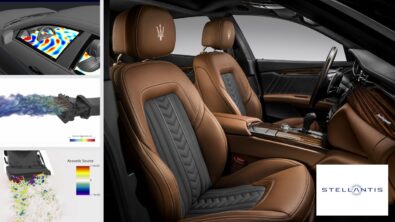Virtually Simulate Vehicle Pass-by Noise in an Inherently Controlled Environment

Sirens. Before you see the ambulance, you hear them, right? And then it increases as the ambulance comes close, passes by, and then fades away as the ambulance moves away, that’s the instantly recognizable Doppler effect. With ambulances, we want to hear them so we can move out of the way, with other vehicles, not so much. It’s one thing when one loud vehicle passes by, quite another when hundreds of them pass by, that’s a problem.
An even further twist is with hybrid or electric vehicles, which are often too quiet. So much so that there’s legislation in the US to set standards for minimum noise in the efforts to ensure pedestrian safety, particularly for blind or visually-impaired.
Whether vehicle manufacturers are mandated to minimize (and find the noise sources on their vehicles) or increase the noise of their vehicles they need to test for pass-by noise. And while we ably physically test pass-by noise, sometimes car makers need to virtually simulate as well. This is particularly the case for exterior pass-by noise testing; when there is inclement weather, with wind and rain, this can make physical acoustic testing more challenging. In addition, increasingly continuing the trend to simulation-driven design, in recent years more manufacturers want to simulate and meet these homologation requirements earlier in the product lifecycle and this too often implies doing it virtually.
Fortunately, using technology such as FEMAO that I detailed about a few weeks ago Simcenter 3D provides the automotive acoustics engineer the ability to efficiently simulate pass-by noise. To find out more about how this is possible, check out this video:


